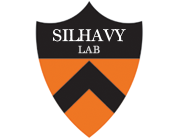Beta-galactosidase is inactivated by intermolecular disulfide bonds and is toxic when secreted to the periplasm of Escherichia coli
Type
The wild-type LamB-LacZ hybrid protein inhibits the export machinery upon induction when assayed by biochemical and genetic techniques, a phenotype referred to as hybrid protein jamming. This hybrid protein also renders cells sensitive to growth in the presence of the inducer maltose, presumably because of the jamming. We constructed a new version of this fusion by adding alkaline phosphatase, encoded by phoA, to the C terminus of the LamB-LacZ hybrid protein. This tripartite protein, LamB-LacZ-PhoA, is as toxic to cells as the hybrid LamB-LacZ; however, it does not jam at temperatures greater than 33 degrees C. Extreme C-terminal sequences of LacZ function as a critical folding domain and are therefore responsible for stabilizing the LacZ structure. To determine if this region of LacZ is important for jamming, we recombined a late nonsense mutation (X90) onto the hybrid construct. We found the toxicity of this new hybrid, LamB-LacZX90, to be nearly identical to that of the full-length protein, but it also does not jam the secretion machinery. This suggests that jamming is caused by LacZ folding. We found no inhibition of secretion in the tripartite and X90 fusion strains at 37 degrees C, suggesting that the toxicity of the new fusions is novel. Under these conditions, the tripartite and X90 fusion proteins form disulfide-bonded aggregates with high molecular weights in the periplasm. Accordingly, we believe that LacZ disrupts some essential function(s) in the periplasm.

